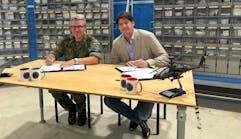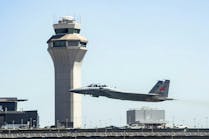Mar. 14—STRATFORD — After two decades of sitting idly, there is once again movement at the former Army Engine Plant.
The plant, which once was known for building aircraft engines has languished for years awaiting hazardous waste cleanup and development.
Recently, there are signs of work going on at the property, located at 550 Main Street. Bryan Purtell, a media relations manager from the U.S. Army Corps of Engineers, confirmed that work is underway to remove sediment containing harmful chemicals and mercury.
The army still owns the site, but there are plans for a private developer, Point Stratford Renewal, to take it over, Purtell said. The transition could happen as soon as April or May, he said.
Point Stratford Renewal first got approved to take over the property back in 2012, according to town economic development director Mary Dean.
"The mayor and our office are just really excited about this finally happening," Dean said. "It's been a very long time coming, so we're very excited."
Dean said the project is quite large, and requires various departments to work together.
"All the departments will be involved from engineering to health to permitting to zoning," she said. "We're all going to work together to figure out how to make this happen most efficiently."
The developer will purchase 77 of the plant's 124 acres, including all of the former buildings and the waterfront, Dean said.
Point Stratford will then demolish the buildings, finish any remaining remediation, cap the land and develop it, she said.
It is not clear how long that process could take, or what kind of development would go there after it is complete.
According to site plans, the current cleanup efforts will be focused on two locations — the tidal mudflats and a drainage ditch called "Outfall-008."
At this moment, only work for the Outfall-008 section is underway and is projected to be finished by December 2022, Purtell said. The tidal mudflats work has not been contracted out yet, he said.
According to the plan, workers will remove up to four feet of sediment to "reduce ecological toxicity and achieve consistency with background conditions (PCBs and mercury)."
In total, this would mean the removal of about 4,900 cubic yards of sediment from Outfall-008, of which 3,800 cubic yards can be reused on-site, according to plans. The remaining 1,100 cubic yards, where harmful particle density exceeds one part per million, will have to be moved off-site to a landfill or designated facility in order to comply with the federal Resource Conservation and Recovery Act and Toxic Substances Control Act.
Another 139,000 cubic yards of sediment in the tidal mudflats are proposed to be removed, according to plans. Of that 130,000 cubic yards can be reused on-site and 9,000 cubic yards will have to be moved off-site.
Starting in 1958, liquid chemical waste underwent "limited treatment" before being released into Outfall-008, Army site proposals explained. This led to the contamination of the sediment in these two areas with "metals and organic compounds," including harmful polychlorinated biphenyls or PCBs.
PCBs have been linked to cancer and reproductive, immune, neurological and hormonal issues in both humans and animals, according to the Environmental Protection Agency.
In its early days, this plant used to produce aircraft and engines for Sikorsky Aircraft. It was then expanded to mass-produce Corsair fighter planes during World War II.
After laying unused from 1949 to 1951, the plant took up manufacturing commercial and military engines, employing thousands of people in town. It ran until 1998 when it was closed after being placed on the Base Realignment and Closure list in 1995.
___
(c)2022 the Connecticut Post (Bridgeport, Conn.)
Visit the Connecticut Post (Bridgeport, Conn.) at www.ctpost.com
Distributed by Tribune Content Agency, LLC.


